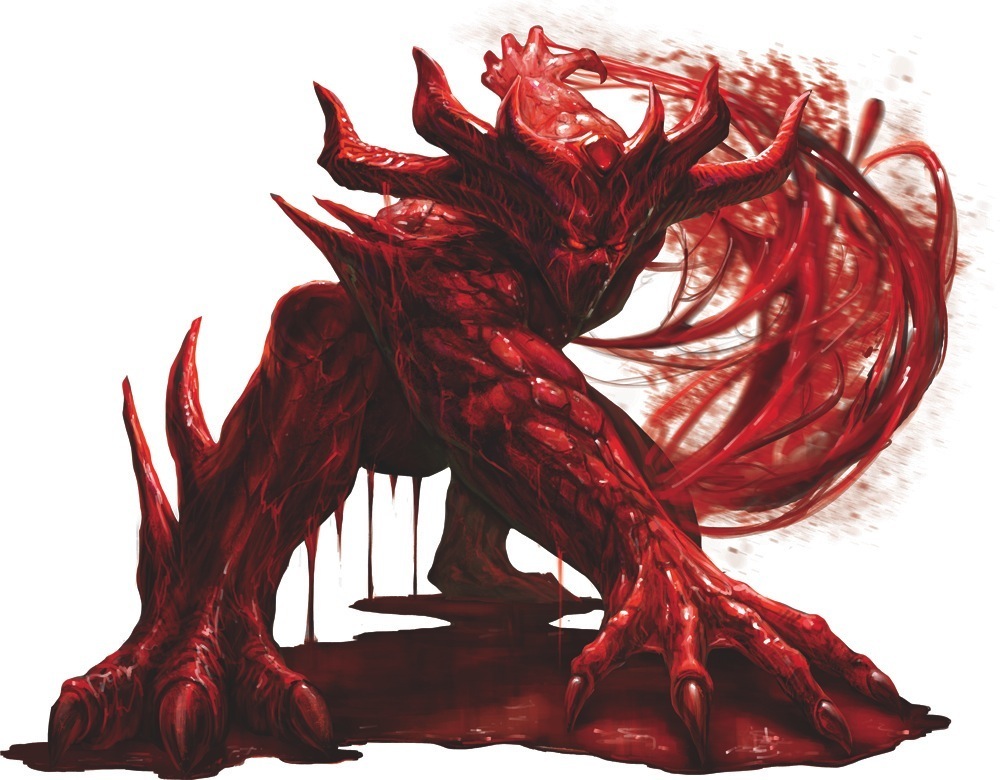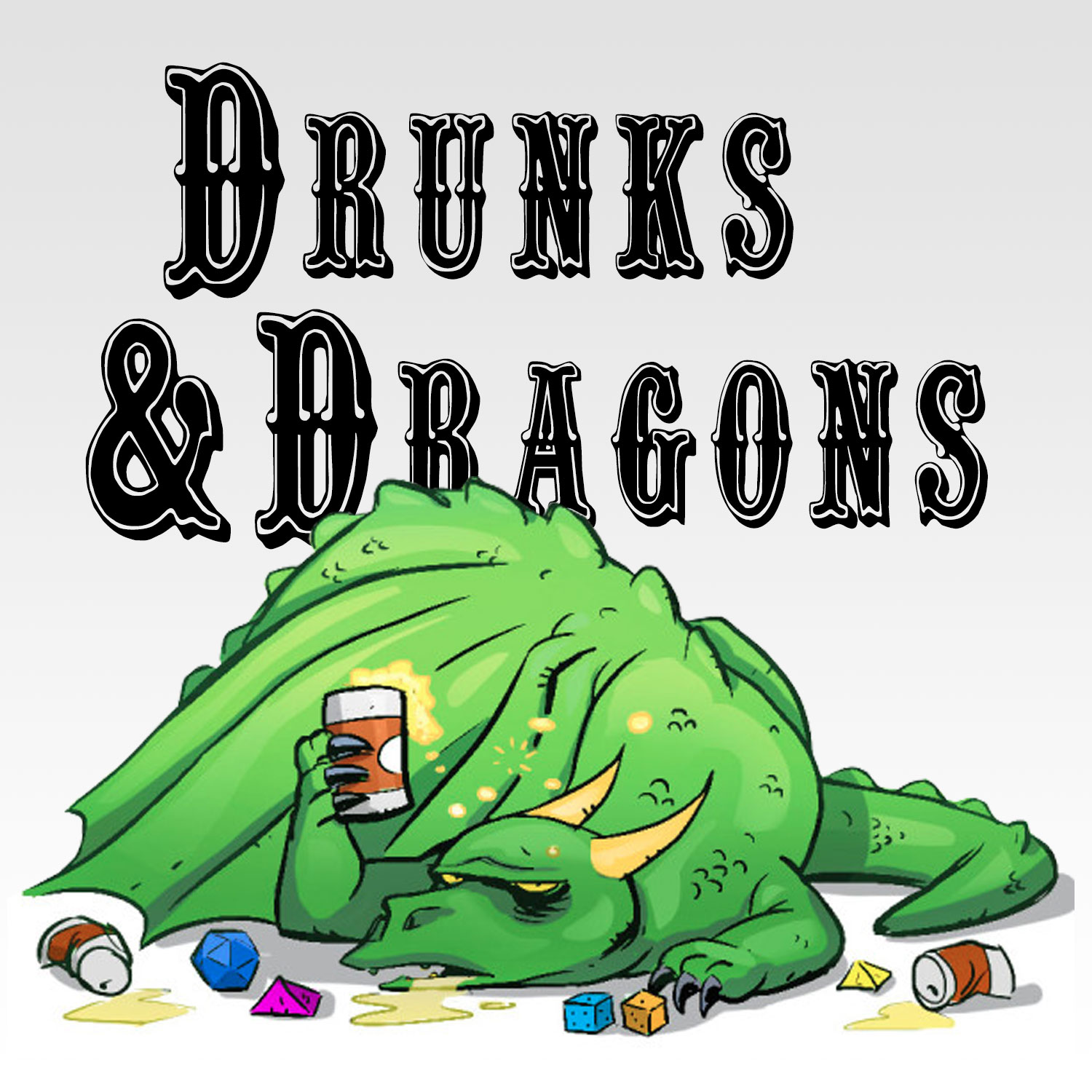Paizo’s September 2014 Player’s Companion
release is
Champions of Corruption. The final book
in the
Champions of series, this
guide is focused on helping players develop evil characters and ground them in
the evil organizations that plague the Inner Sea. From the beginning, you can see that the designers took this
task seriously. On the front
cover, Seltyiel is killing a unicorn.
I kind of like that the unicorn doesn’t look all that
good though.
It would be a lot harder to see Seltyiel killing something that looks
super sweet. Rather, it’s milky white eyes make you think that perhaps
the unicorn is the corrupt one and the iconic is trying to defend himself. In fact, throughout the entirety of the
book, the art makes it clear that these are not characters to trifle with.
Gods
& (Summoned) Monsters
The guide’s inside covers feature familiar
material to other readers of the Champions
of series. On the front inside
cover we have a chart detailing the evil gods. This could actually be really helpful during character
creation. I think I may pull out the ones from Champions of
Righteousness & Champions of Balance next time the party has to
make characters. I’m hoping this will be helpful both for world immersion
and for reminding them that it would not hurt to have an actual healer in the
party. Much like the previous two Champions
of books, this one closes with a feat improving the character’s ability to
summon evil monsters. Like the other two, when a character with this feat
summons a creature off the evil monster list, the summoning takes only a
standard action.
Moral
Uncertainty
Normally the “For Your Character” and “Rules
Index” two pages seem like waste to me that could be much better filled with
world-building or crunch product. Here Paizo has introduced ideas that
are interesting about how they frame evil—certainly ambiguous. They’ve included a “Did You Know” box
about Hermea and the inherent disagreements about how to characterize
Mengkare’s alignment. Newsflash:
Paizo staff can’t even agree as to whether or not Mengkare’s experiment is
interesting to him or actually among the most diabolical things happening in
the Inner Sea region. Adopting
this viewpoint makes sure that any game taking place in Hermea is that much
more interesting by giving us a rationale on how a character’s complex motives
could make it evil or not in the eyes of some beholders.
Further
Alignment Arguments – But Without the Flaming!
Next we are treated to some information about
“Why Be Evil.” This should be
required reading with some actual interesting answers for any character that
wants to play evil. A lot of the tropes that are often picked up by
chaotic neutral characters can be found here. Motivations for evil
characters should be well thought out. I especially thought that terror
made an interesting motivator. The making evil fun call out box present
some seriously important and well thought out things that any campaign including
evil characters should consider.
Next Paizo takes us through philosophical
underpinnings of the three illegal alignments. There are also call out
boxes for each evil alignment (teamwork, alliances, and affinities for lawful,
neutral, and chaotic evil, respectively) that discuss why an evil character
might actually be interested in working with the party and putting up with
group decision making as opposed to just killing everyone and taking the loot.
Thoughts on alignment: MAD POINTS FOR
RECOGNIZING THAT NEUTRAL EVIL IS ACTUALLY THE REALLY BAD ONE. Chaotic
evil always gets that wrap, and while it is evil, it’s chaotic nature also often
makes it ineffective. Good call on making the character philosophy for
the psychopath neutral evil—it gives people an idea of just how horrible this
alignment really is. The horrifying mind magic trait complements this
really well.
Noting that chaotic evil characters are
probably the least likely to judge or even care about other characters’
alignments also makes them more compelling. I always have trouble really
getting into the idea of a CE character or villain because I just see them as
being irredeemably insane and therefore just dismiss them as options, but this
has given me some things to think about.
A chaotic evil character with known poor impulse control would be really
fun to try running. Ideally, he’d
have family or someone he’s obsessed with in the party. He might go to any end to make sure
that she gets the love and lovely treasure he believes she so richly deserves.
Evil
in the Inner Sea
Next the guide contains an overview of how evil
works as an organizational force in the Inner Sea. I did not much care for
the ‘Evil Planes’ call out box. There are so many other options for
‘local’ places where evil is interesting and worth exploring that this is weak
sauce. Better to have given us something more in depth on something in
the Inner Sea. There are several options in the Other Dens of Evil
section and I’d have liked to have seen one of them explored rather than just
noting (somewhat repetitively) that there are riches to be gained on the evil
planes.
When we’re treated to an explanation of the
evil organizations of the Inner Sea, it’s the same treatment. Again there’s a call out box related to
other organizations—would have been nicer to see something shorter here and
more on one of the evil organizations that they covered. Also, thanks for
bringing back the Rushlight Society! They add an interesting piece of
spice to Magnimar and are easy to forget for some reason.
Classes
& Archetypes
•
New Subdomains: Cannibalism, Corruption, and
Greed have some neat abilities. Greed’s ability allows the character to steal
the effects of a spell being cast by another caster. What it doesn’t do
is allow you to know what that spell is. It’s unclear whether or not you
can use a spell craft check to learn what spell is being cast in conjunction
with this ability. I’d hope that’s the case, but it’s not totally clear.
Corruption’s ability to make people do evil acts or be sick is just
downright devious! I think in game that I’d want to flavor it as
requiring the target of the spell to do something evil that’s in line with the
deity granting the subdomain power’s portfolio.
•
Dread Vanguard (Antipaladin): This generically
evil anti-paladin trades his spell casting abilities for some pretty amazing
evil area of effect considerations. This anti-paladin also need not be
beholden to a singular deity, but can be attached to a force—by taking his
spells away and giving effects that are much more evil than they are of chaos,
you actually have something slightly more akin to an eldritch knight.
But, the eldritch knight-lite hasn’t had to deal with the troubles of
multiclassing. Along with the vile leadership feat, this is another great
option for creating a villain in a campaign.
•
Alchemist Discoveries:
◦
Pickled Quasit - The alchemist for the party I
GM is currently working on reforming a goblin and Wart wreaks havoc all over
the battlefield. A quasit promises to be just as fun!
◦
Plague Vector - Looks awesome, but also
incredibly complicated.
◦
Tainted infusion - Amazeballs. This looks
like too much fun.
•
Raging Cannibal (Barbarian): Derives its power
from violent cannibalism. Highlight ability comes at 6th level when the
barbarian gets a sort of modified power attack when using her bit. She
takes a -1 on her attack roll and adds 2 points of bleed damage. Much
like power attack, every 4 levels the attack penalty becomes one greater and
the bleed damage goes up by 2 more.
Feats
•
Damnation Feats: These are really cool!
First of all, I like how their bonuses and penalties both build off of
each other. I don’t love the magic feat, but the ones that create
resistances and boost intimidate are nice. Actually, the box text on page
25 expands the list of spells that should have the evil descriptor
such that the maleficium feat looks a little more attractive. The one that
masks alignment is a must for GMing for parties with paladins!
•
Betrayal Feats: These are the dark side of
teamwork feats. These feats let you do absolutely terrible things to your
allies in an effort to get wildly awesome bonuses. Archers can get rid of
the penalty for shooting through an ally or into melee at the expense of
possibly hitting their allies. You can force people to switch places with
you. You can use your allies as shields to avoid damage. You can
even gain stupendously huge bonuses to your damage when flanking if you’re also
willing to hit your flanking ally. RAW, you and your ally must take this
feat. I get while that’s the case RAW, but I wouldn’t require it at home.
•
Non-magical item destruction feats: Page 23
treats us to a selection of four feats that all relate to breaking items and
gaining effects (intimidation, area of effect shrapnel damage, improved
improvised weapon). These all seem like they’d be fun for a brawler or
other martial class that has the ability to change out feats. They also
look fun for playing a barbarian or any martial character in a campaign where
“real” weapons are hard to come by!
Traits
& Drawbacks
•
Foul brand (drawback) places an evil god’s holy
symbol into your flesh. It imposes penalties based on where on your body
it’s located. The trait won’t let the character use the brand as a holy
symbol, which seems like a shame. If you embrace your branded nature,
might as well get something out of it.
•
Punish insurrection (combat trait): Gives you
+1 to attack and damage rolls against members of the same organization as you,
so long as their standing in the organization is less than yours. As a
GM, I love this trait for a villain, especially if I have a PC that is a former
member of an evil organization. However, I think I’d also want to home
break a response trait that would allow those who have left an organization and
are now fighting against it to do the same thing. That could be fun
especially in a campaign that dealt with Hellknights or the Aspis Consortium.
•
Umbral Unmasking (drawback) means you cast no
shadow and it freaks people out. Warded Against Nature (drawback) makes
animals avoid you, which is another interesting effect.
• Wicked
Leader (Social) trait: I’m going to use this book mostly for villains, so it
won’t matter as much (because as the GM I can just let them have lackeys of any
level I want). If I had to play my villains as close to crunch though,
this and Vile Leadership would be de rigeur.
Spells
•
Shared Suffering: You take 1d6 / every odd
caster level you possess (up to 5d6 at 9th level) by stabbing yourself with a
knife cracking with necromantic energy. You then target one creature
within long range to take that damage plus your ability score bonus that
attaches to your spell-casting class. On balance I do not love this spell
and at first I wondered where it would be useful at all. The target does
not get a saving throw (though spell resistance still applies). So, I
guess that it might be useful against an opponent with a high AC that the party’s
having trouble finishing off. That seems like something of an esoteric
use, meaning that this is a far better choice for a spontaneous caster than it
is for a prepared one. Of course, being esoteric, would a sorcerer waste
a spell slot on it? Maybe it’s actually best for a hybrid class like the
arcanist.
•
Wracking Ray: If this hits, it’s going to cause
some major problems for your target. It does 1d4 Dexterity and Strength
damage per 3 caster levels possessed (max 5d4). But, it’s a 5th level
spell, meaning that the minimum it’s ever going to do is 3d4 (7.5 average)
damage to BOTH of an opponents scores—that’s going to seriously undermine an
opponent’s attacks and dodging ability. A Fortitude save halves (DC 18
minimum), but that can be tough for a monster with a weak fortitude save and
you’re still going to get nice effects out of this even if the opponent does
save. This is worth adding to any spell list.
Magic
Items
•
Shadow Piercings: Neat Nidalese flavor and
crunch. The Guide gives instructions for creating new magic items that
mix body piercings and shadow magic. The piercings have to be placed in
specific slots, but also allow another magic item in that slot to function as
well. Each shadow piercing has a minor, major, and greater form, which
give increasingly better bonuses. From a story perspective, I’m a little
bummed that they don’t have any effects on characters for adding them (like
cybernetics in the Technology Guide), but they might be less attractive for
characters if they did.
•
Amulet of Euphoric Healing: This thing is
AWESOME! The amulet’s user can imbue her healing spells with an addictive
force. Anyone healed by the user risks becoming addicted to the
character’s healing magic and also takes a -2 penalty on Will saves against the
caster.
•
Collar of Unliving Servitude: A must for all
necromancers. The collar can be placed on an undead creature by a living
creature, linking the one placing the collar and the undead creature.
From that point on, anytime the living creature takes negative energy
damage, it’s transferred to the undead as healing. The same is true for
when the undead creature takes damage from positive energy. Also, fun
flavor—imagine these being involved in living-undead marriages in a place like
Geb to really bring the two together!
•
Ring of Plagues: Let’s just say that you do not
want to be the person inflicting damage on the wearer of this ring.
•
Sinner’s Wage: Amazing little tool for any
enchanter.
Other
•
New rooms: Want a room filled with blood of
virgins that can reverse the effects of aging? Paizo has you covered.
•
New poisons: Here we have poisons with some new
and unexpected effects: slowing victims’ move speeds, impeding their
concentration checks, and impeding their ability to sleep. These are some
effects that would drive PCs bonkers!
Wrap
it up!
Champions of Corruption makes
for a fantastic read. The options presented here are incredibly powerful,
some might even say too powerful. Paizo’s staff has also done an
excellent job incorporating the evil themes into Golarion. This book is
going to see a lot of use at my table. But, it’s not going to see much
use in the way of a Player’s Companion. What I’d really like to see is
more books like this in the Campaign Setting line. This seems like
a natural extension of Inner Sea Magic and Inner Sea Combat.
If this were in the Campaign Setting line, I’d give it four stars.
As a Player’s Guide, it still succeeds, but not quite as well as Champions
of Purity or Champions of Balance.
3 stars.









